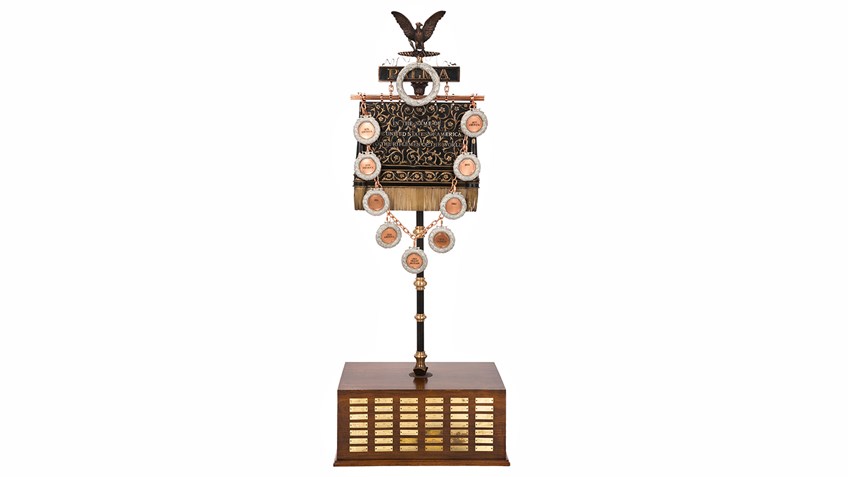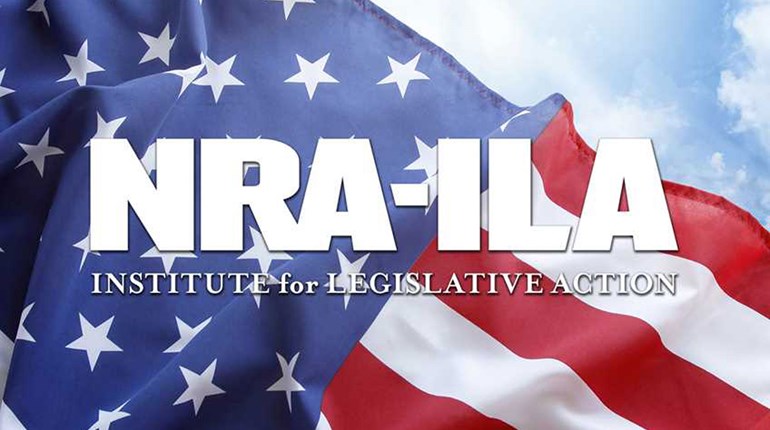
Here are five things you may not know about the historic Palma Trophy.
The original Palma Trophy cost $1,500
After a string of victories against international teams, beginning with the Irish at Creedmoor on Long Island in 1874, the United States was enjoying a hot streak in long-range rifle competition. In 1878, the U.S. issued a challenge to the rifle shooters of the world, but no one would answer. To sweeten things, the Palma Trophy was commissioned as a suitable standard-bearer for this prestigious annual competition.

The original Palma Trophy was a seven-and-a-half-foot-tall Roman triumphal standard that was constructed by Tiffany & Co. The cost—$1,500, including 280 ounces of silver—was underwritten by private contributions. Rather than the Roman SPQR, the trophy was engraved with “Palma” (Latin: victory, honor, glory) and the words “In the name of The United States of America to the Riflemen of the World.” Officially known as the Centennial Trophy, shooters quickly adopted the Palma Trophy moniker for it.
There was a 38-year lull in competition
Although the intention was to contest the Palma Trophy annually, it didn’t work out that way. After 1878, the competition occurred only intermittently through 1928. By 1966, formal competition had resumed (at varying intervals) at venues around the world: Australia, New Zealand, Great Britain, Canada, South Africa and the United States.
The original Palma Trophy disappeared
Sometime after 1930, the Palma Trophy vanished. It was last seen in a corridor in the State, War and Navy building (now known as the Old Executive Office building, located next door to the White House). Correspondence between Gen. Milton A. Reckord, then-NRA Executive Vice President, and the Secretary of War confirmed the trophy’s presence and acknowledged that it was the property of the NRA. Not much happened in the search afterwards.
After learning that all trophies in the U.S. Army’s inventory had been transferred to a Smithsonian Institution storage facility in Pueblo, Colo., NRA Competitive Shooting’s John Grubar and Smithsonian personnel combed this facility, but they were unable to find any trace of the Palma Trophy.
Former NRA Competitive Shooting Director declares search a lost cause
Ed Andrus, the longtime NRA director of competitive shooting, concludes his May 1991 Shooting Sports USA article about the Palma Trophy with this Raiders of the Lost Ark reference: “Whatever happened to the original Palma Trophy may never be known. However, the situation of the Palma Trophy is certainly reminiscent of the last scene in a film about the lost Ark of the Covenant.” The scene Andrus is referring to depicts a fictional U.S. government warehouse filled with wooden crates containing exotic, top-secret items, as a lone worker wheels down a crate holding the aforementioned religious artifact to join the collection. Over the protests of the film's protagonist, Indiana Jones, the federal government takes custody of the Ark, only for it to be lost in the bureaucracy. Perhaps the Palma Trophy met a similar fate.
The current Palma Trophy is a replica
The search for the original Palma Trophy does have a somewhat happy ending. During the search, the original Tiffany & Co. trophy plans were located. Dr. Herbert M. Aitkin from Eau Claire, Wisconsin, a member of the NRA High Power Committee at the time, used the plans to construct a two-thirds size replica of the Palma Trophy. In 1988, the replica was unveiled, which Dr. Aitkin donated to the NRA.
Today, the Palma Trophy is awarded to the winner of the Long-Range Team match (800, 900 and 1,000 yards) fired at the World Long-Range Championships.
Read more: 5 Things You Didn’t Know About The Leech Cup



































